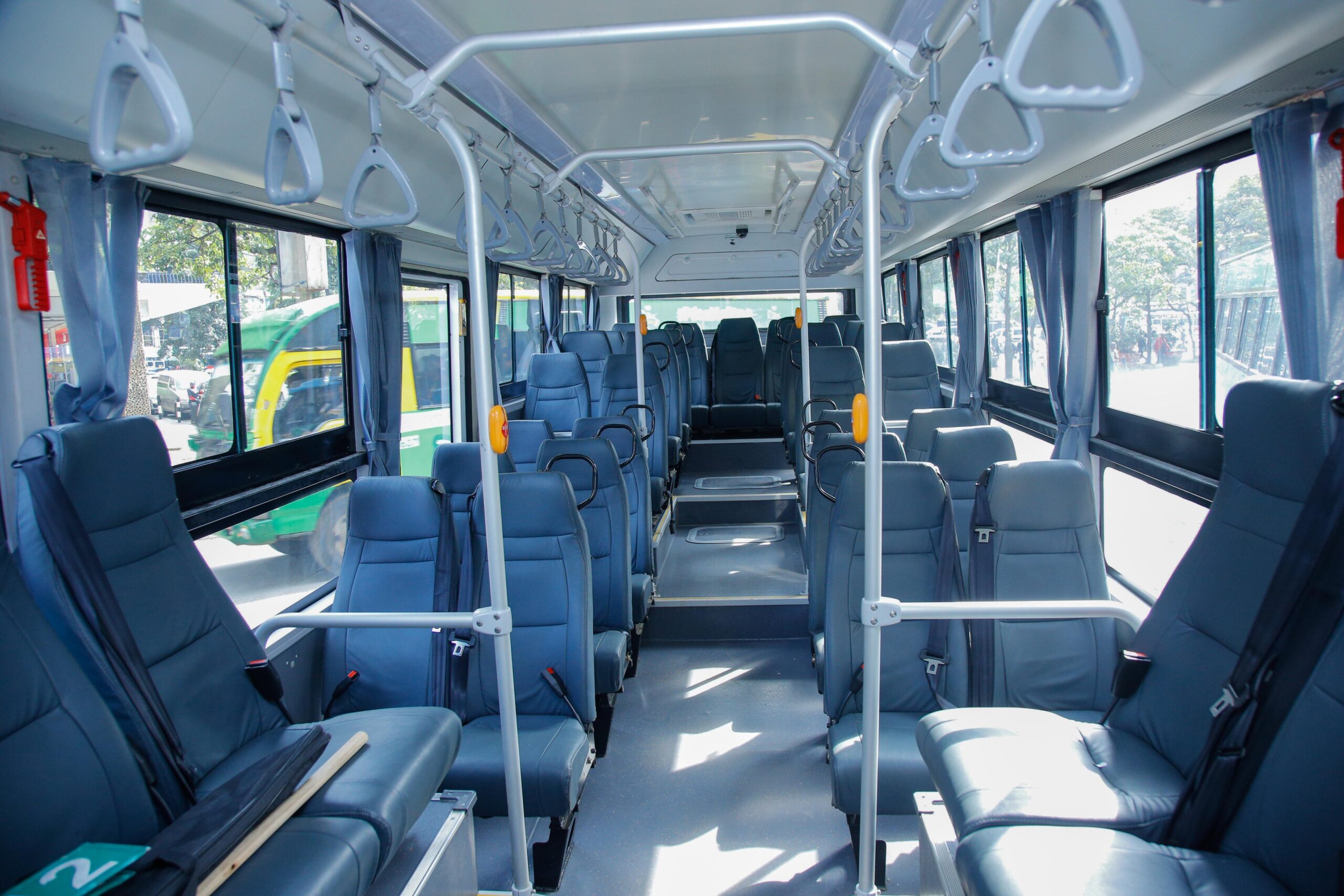With increasing populations and decreasing resources creating tensions around the world, climate change could have a detrimental impact on national security. In turn, greater insecurity could limit governments and organizations’ abilities to address climate change and the associated security risks. In this interview, Tom Middendorp speaks to Hugues Lavandier, a senior partner in McKinsey’s Aerospace & Defense Practice, about the role the defense industry can play, in collaboration with the public and private sectors, in mitigating the impact of a changing climate on security. Prior to his current role, Middendorp was the chief of defense of the Royal Netherlands Armed Forces and is the author of the book, The Climate General.
McKinsey: A little over a year ago, we interviewed you about the link between climate and national security. What has changed since then?
Tom Middendorp: I think we are increasingly facing a new reality, one that we can’t deny: climate change is something we must deal with. Last year, one record after another was broken when it came to high temperatures, droughts, floods, and severe weather events. In the United States alone last year, there were more than 28 separate climate disasters—the highest number on record—causing $92.9 billion in damages. And that’s just the direct impact of climate change, let alone the indirect.
However, the disruptive effects of climate change are increasingly being recognized and regarded as a matter of national security. For example, NATO regards climate change as a defining challenge and aims to be a global leader on climate and security. NATO in 2023 decided to establish a Centre of Excellence on Climate and Security in Montreal to deal with the issue. In addition, various NATO member countries are designing mitigation and adaptation strategies for their security sectors; however, not all at the same pace.
McKinsey: You have previously made the point that “climate change is not a stand-alone issue.” Could you elaborate on that?
Tom Middendorp: This needs to be seen in the context of four main trends—separate from the technology revolution that continues in the background: population growth, scare resources, climate change, and the geopolitical landscape. The first of these is the increase of the world’s population, which currently stands at eight billion. At the start of this century, it was 6.1 billion and the United Nations expects an increase to about 11 billion by the end of this century.
The growth of the world’s population will result in growth in the global demand for water, food, natural resources, and livable, arable land. This will result in a growing gap developing between demand and supply, leading to competition and tensions on a global scale. Climate change reduces the livable, arable land on our planet, meaning the current rate of production and consumption of resources is not sustainable in the longer term.
The changing geopolitical landscape is the last trend. We are moving away from a globalizing world toward a more fragmented one with competing coalitions and power blocs. This directly impacts the effectiveness of multilateral mechanisms and our ability to find global solutions, because these mechanisms require consensus.
The disruptive effects of climate change are increasingly being recognized and regarded as a matter of national security.
McKinsey: What could be the potential outcome if the nexus between climate change and security is not properly addressed?
Tom Middendorp: I think we will see impacts on a global, regional, and national level. On a global level, it will lead to more competition between power blocs, which could potentially lead to conflicts. Historically, most conflicts globally have been about access to scarce resources. Therefore, as resources become even scarcer due to the impact of climate change, we can expect more disruptions in global supply chains. This effect on supply chains needs to be integrated into our risk management.
On regional and national levels, climate change directly impacts water and food security, which could lead to internal tensions around access to arable lands and job opportunities. These tensions could easily escalate into internal and regional conflicts. Indirectly, supply chains are disrupted, which could lead to further security issues.
Developing countries in the Middle East, northern Africa, and South Asia, especially, are most affected by a changing climate and its disruptive effects. Countries in these regions are extremely vulnerable to floods and heat waves and are reliant on freshwater supplies from sources outside their own borders.
On a local level, climate change is causing an increase in the occurrence of extreme weather incidents, such as hurricanes, wildfires, flooding, and heat waves. This is already having severe consequences for communities and livelihoods. These incidents represent a “new normal” to which countries and vital infrastructure will need to adapt, bringing new challenges for local and regional crisis response mechanisms.

McKinsey: How can security and defense potentially provide an early warning to alleviate some of the challenges associated with climate change?
Tom Middendorp: I’m not a pessimist, despite having painted a very bleak picture. We need to face the situation, adapt to the changing climate reality, and innovate solutions. We have unprecedented foresight on the impact of this new reality, which gives us a responsibility to adapt and be prepared. The security sector needs to be part of the solution.
On the area of forecasting, it can help to assess the security effects of different climate scenarios by the tools at its disposal, such as big data, military expertise, and intelligence services. The sector can identify areas where climate change could lead to migration flows or instability, adding a security lens to help create a more comprehensive picture. Building this comprehensive understanding can help institutions be better prepared. These insights can be translated into early warning mechanisms to increase our reaction times and prevent governments from being taken by surprise.
On the adaptation side, there are internal and external dimensions to what the security sector—the military—can contribute. Internally, it is important to climate-proof organizations to enable them to operate under any climate circumstance and to protect their vital infrastructure (such as naval ports) against the disruptive effects of climate change. Externally, the security sector can help affected countries adapt. As explained earlier, many of these countries are vulnerable to the effects of climate change, so helping them to adapt and become more climate resilient could be regarded as a tool for conflict prevention. The security sector thereby has a vested interest in improving adaptation programs for fragile regions. These are programs that can—and should—be used also to reinforce stability in a country as a means for conflict prevention. There is no adaptation without security, as there is no security without adaptation. These are two sides of the same coin.
The third area of attention is mitigation. On a global scale, we need to find new ways to bridge the gap between growing demand and declining availability of resources. It is not sustainable to meet that growing demand by producing more in the way we are producing now, because that will only lead to a more rapid depletion of scarce resources and to more global competition. It is becoming crucial that we look for ways to become more autonomous and reduce our dependency on scarce resources. This requires us to innovate on circularity and on extending life cycles, reusing materials and components, and using alternative materials that are less scarce. The more self-sufficient countries can become, the less vulnerable they are.
It is important that the security sector recognizes the enormous potential of new green technologies. These technologies can enable the sector to operate more autonomously and become more self-sufficient. New technologies can help security organizations to become energy independent, to produce their own water (by extracting water from desert air with a small solar-powered device), and to print their own spare parts—with 3D printing—without needing to resupply. The defense sector has always been a front-runner on new innovations and can act as a platform for innovation for industries, private companies, and research centers.
There is no adaptation without security, as there is no security without adaptation.
McKinsey: You’ve emphasized that different sectors and various actors in the ecosystem need to come together. What could public-private sector collaboration look like to address some of these challenges?
Tom Middendorp: Collaboration between security experts and scientific research institutes is important. Scientists can use experts’ input to build further knowledge on the topic, and this can be used in the diplomatic arena to inform players as they shape new policies based on research. An example of such an interactive network is the International Military Council on Climate and Security—which I chair—where security leaders and research institutes join forces.
From a future capabilities perspective, we need to innovate on self-sufficiency, which requires a new kind of cooperation between the public and private sectors, merging old and new technologies into new concepts. It is crucial that defense industries and defense organizations open their gates for innovators, start-ups, and research centers that together can come up with out-of-the-box solutions. This requires companies and organizations to accept risks and be willing to invest in innovation. Nine out of ten innovation attempts will not succeed, yet one successful innovation can help guarantee future security.
An interesting example of this is an initiative called FieldLab SmartBase in the Netherlands, a free space where military users, tech companies, and research centers can meet to look at what they can contribute to achieving one common goal: building a completely self-sustaining military compound. This pulls together many different players who all bring new pieces of the puzzle to the table and create an environment for innovation.
McKinsey: At COP28, the NATO Secretary General again stressed the Alliance’s goals to reduce emissions to become net zero by 2050. What can member states do to achieve these objectives?
Tom Middendorp: It starts with member states being made more aware of the need to change the defense sector in relation to a changing climate, for example, by common standards to be incorporated into their climate mitigation and adaptation programs. It’s also important to look for the right narrative. There is a perception that climate mitigation and adaptation will cost additional money that will affect operational readiness. It is crucial that these efforts be presented more as an opportunity than a cost. In many ways, if you innovate on circularity and self-sufficiency, you can create military units that are more autonomous and need less logistical supply.
McKinsey: What do you view as the most important message in the context of climate and security?
Tom Middendorp: Climate change is much more than just an environmental problem. I have just returned from Iraq where I saw how the Mosul Dam only contains 20 percent of its capacity, threatening the water supply to large parts of the population. Throughout the country, I met with farmers who have had to leave their lands because of increasing droughts and were struggling to sustain their families.
The geopolitical landscape is becoming more complex, and we are standing at the forefront of a challenge that requires innovation. Because the military can help predict where conflicts could occur due to a changing climate, we can provide unprecedented foresight into the impact that climate change could have.




